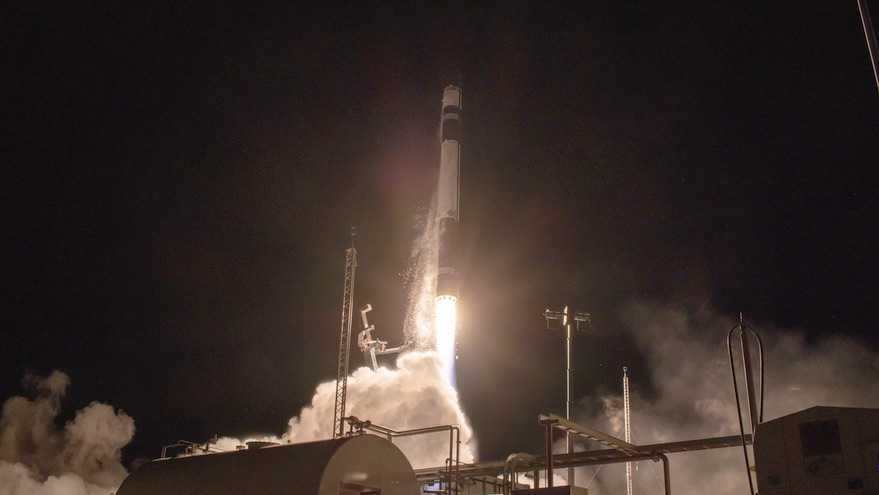Rocket Lab launches Japanese radar imaging satellite

Rocket Lab successfully launched its first satellite to start Japanese radar imaging, concluding the small launch vehicle company’s year of roller coaster.
The electron rocket blasted off from Launch Complex 1 at Rocket Lab in New Zealand at 5:09 AM ET. The rocket’s kick stage deployed its only payload, the StriX-α satellite for Synspective, about an hour after takeoff into a 500 km sun-synchronous orbit. The launch used a dedicated payload display to accommodate what Rocket Lab has called an “ultra-wide body” of the satellite.
StriX-α is the first in the constellation planned by Synspective, based in Tokyo, Which raised $ 100 million as of mid-2019. The “100 kilogram class” spacecraft, as described by the company, can generate images using Synthetic Aperture Radar (SAR) with an accuracy of one to three meters. StriX-, a second experimental satellite, will follow in 2021. Ultimately, the company plans to deploy a constellation of more than 30 satellites.
Synspective originally contracted with Arianespace to launch the StriX-α on the Vega missile. However, in April Announced that it had signed a contract with Rocket Lab for the satellite, Citing delays in Vega’s launch schedule due to a July 2019 launch failure. The company expects to use the Arianespace contract to launch a future satellite instead.
“With the launch of StriX-α, Synspective will be able to demonstrate the capabilities of satellite and data-processing technology,” said Motoyuki Arai, founder and CEO of Synspective, in a post-launch statement. “This is the first step towards our group of 30 satellites, and along with developing our solutions, a large-scale business expansion will start.”
The launch, dubbed “The Owl’s Night Begins” by Rocket Lab, was the seventeenth of the electron rocket overall, and the seventh of 2020. Rocket Lab entered the year with the goal of launching up to 12 electrons, It carried out its first launch, the National Reconnaissance Office payload, in January.
However, the coronavirus pandemic Rocket Lab was forced to suspend launches in March While she was preparing for her second mission. It resumed its launch in June, Second mission launch for NRO Which also carried university loads.
The company suffered a setback in July when An electron launching satellites for Canon Electronics, Planet, and In-Space Missions failed. Rocket Lab Tracing the failure of the faulty electrical connection in the upper stage of the missile Which eluded quality control tests before launch. The company brought an electron back into flight after less than two months of failure. The launch of the SAR satellite, Capella. This launch also carried Rocket Lab’s first photon satellite.
After the launch of Canon and Planet satellites in October, Rocket Lab launched nearly 30 small satellites to various customers on November 19. This launch was the first in which the company attempted to recover the first stage of the missile, and is part of a project announced in 2019 to eventually reuse the booster. The company managed to recover the booster from the ocean, Declaring the effort a “complete success”.
Rocket Lab has not attempted to recover the first stage of StriX-α release. The company said during the launch webcast that the next takeover effort will begin in early 2021.

“Coffee fanatic. Gamer. Award-winning zombie lover. Student. Hardcore internet advocate. Twitter guru. Subtly charming bacon nerd. Thinker.”











